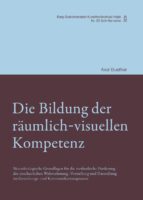The separation between body and mind can be traced back to the use of two different descriptive systems that seemed incompatible to us until today. We have recently obtained empirical results on the biocybernetic processes in our brain, which can be studied in interaction with our experiential and behavioral states. Our spirit then embodies itself in the same way that our body spiritualizes itself. Cause and effect or action and reaction are in a causal relationship. The effects of brain damage on our conceptions of reality reveal the links to the material substance of our nervous system. We can observe how our knowledge and the skills and abilities to apply it determine our vivid perception, imagination and representation.
Due to the specific performance dispositions of our nervous system, we each live in one of the countless possible worlds, which are constantly being synchronized via all forms of environmental communication. People whose spatial-visual competence has been impaired as a result of brain damage adapt their perception of reality to the still functional performance dispositions of their brain. They eliminate the contradictions in the explanatory model of their life reality and restore their ability to think and act. It only becomes problematic when their new world contradicts the socially accepted reality.
The uniqueness of our world view becomes clear wherever our ways of thinking and acting provoke contradictions. Normal is what we are used to. Reality, on the other hand, refers to our conventions or the agreement within societies on a common scientific or religiously based model of thought and action. As soon as we accept that each person perceives a different world, we can make use of the divergence of individual viewpoints and perspectives in a targeted way to methodically promote the development of intelligence and skills.


